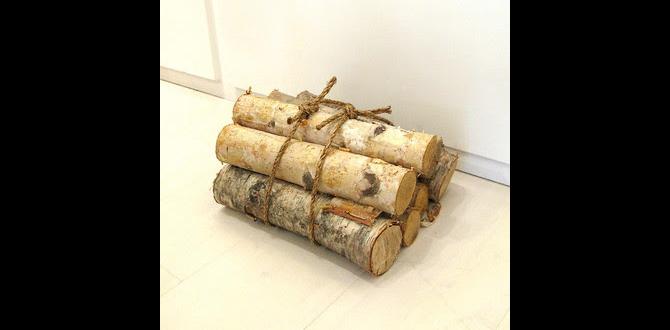Bolded Quick Summary (Top of Article)
Mastering pneumatic nail gun safety is crucial for any DIYer or woodworker. Follow these essential tips, including inspecting your tool, wearing protective gear, ensuring proper workpiece and nailer setup, and understanding your nail gun’s firing modes. Staying vigilant protects you and ensures project success.
Hey there, fellow DIYers and woodworking enthusiasts! Jack Shaffer here, your go-to guy at Nailerguy. Ever unboxed a shiny new pneumatic nail gun and felt that buzz of excitement to start a project? I know I have! These tools are absolute game-changers for getting projects done faster and with a pro finish.
But here’s the honest truth: with great power comes great responsibility. Pneumatic nail guns are powerful tools, and if they aren’t handled with care, they can cause serious accidents. The good news? It’s totally manageable! Understanding and practicing a few key safety steps can make all the difference between a rewarding project and a trip to the emergency room.
Think of this guide as your friendly checklist to keeping yourself safe and sound while you build. We’re going to walk through everything you need to know, step-by-step. So, grab your safety glasses, and let’s dive into making sure your nail gun experience is as safe as it is productive!
Table of Contents
Why Safety With Pneumatic Nail Guns Matters
Pneumatic nail guns, also known as air nailers, use compressed air to drive nails into wood, metal, or other materials. They’re incredibly efficient and have revolutionized how we build everything from furniture to decks. Projects that used to take hours of hammering can now be completed in a fraction of the time.
However, this power comes with inherent risks. A nail fired from a nail gun travels at high speeds. If it hits you or someone else, it can cause deep puncture wounds, nerve damage, or even eye injuries. Reports from the National Institute for Occupational Safety and Health (NIOSH) highlight that thousands of injuries are treated in emergency rooms each year due to nail gun accidents. Many of these injuries could have been prevented with proper awareness and a few simple safety practices.
Our goal here at Nailerguy is to empower you. We want you to feel confident using your tools, knowing you’re doing it the safest way possible. This isn’t about scaring you; it’s about equipping you with the knowledge to avoid common pitfalls and enjoy your woodworking journey without worry.
Essential Safety Gear: Your First Line of Defense
Before you even think about connecting an air hose, let’s talk about what you need to wear. Think of your personal protective equipment (PPE) as your trusty sidekick. It’s non-negotiable when operating any power tool, especially a nail gun.
Eye Protection: Non-Negotiable
This is hands-down the most critical piece of safety gear. We’re talking about safety glasses or goggles that meet industry standards, like those certified by the American National Standards Institute (ANSI Z87.1). Why? Because a stray nail, a piece of flying debris, or even a recoil can send something rocketing towards your eyes at high speed. Regular eyeglasses or sunglasses just won’t cut it. Make sure they fit snugly and cover your eyes from all angles.
Hearing Protection: Save Your Ears!
Pneumatic nail guns can be loud. Repeated exposure to loud noises can lead to permanent hearing damage. Whether you’re using earplugs (disposable or reusable) or earmuffs, make sure they provide adequate noise reduction, especially if you’re working in a confined space or for extended periods. Your future self will thank you!
Gloves: For Better Grip and Protection
A good pair of work gloves offers a couple of benefits. First, they provide a better grip on the nail gun, reducing the chance of it slipping. Second, they offer some protection against minor scrapes and punctures if you accidentally touch the tip or a nail. Look for gloves that are durable but still allow you to maintain good dexterity so you can comfortably operate the trigger.
Footwear: Sturdy and Protective
Always wear sturdy, closed-toe shoes, preferably work boots. These protect your feet from dropped tools, nails, or lumber. You wouldn’t want a rogue nail finding its way through a flimsy sneaker, right?
Other Protective Clothing (Optional but Recommended)
Consider wearing long sleeves and pants made of durable material. This adds another layer of protection against splinters, minor abrasions, and even accidental nail firings. Avoid loose clothing and jewelry that could get caught in the tool or moving parts.
Before You Connect: Pre-Operation Checks
Getting your nail gun ready to go involves more than just plugging it in. A few minutes spent on checks can prevent a whole lot of trouble down the line. This is where you ensure your tool is in good working order and ready for safe operation.
Inspect Your Nail Gun
Before each use, give your nail gun a quick once-over. Check for:
- Cracks or Damage: Look for any cracks in the housing, especially around the nose or handle. If you see any damage, don’t use the tool until it’s repaired or replaced.
- Loose Parts: Make sure all screws and components are tight.
- Nose Piece Condition: Ensure the tip of the nail gun (the part that contacts the wood) is clean and free of debris. A clogged or damaged nose can lead to misfires.
- Safety Tip Functionality: The safety tip (or contact trip) at the end of the gun needs to depress properly for the nailer to fire. Make sure it moves freely and isn’t stuck.
Check Your Air Hose and Fittings
The air hose is your lifeline to power, but it’s also a potential hazard if compromised.
- Hose Condition: Inspect the entire length of the air hose for cracks, worn spots, bulges, or kinks. A damaged hose can burst under pressure.
- Fittings: Ensure all fittings connecting the hose to the compressor and the nail gun are secure and not leaking.
- Couplers: Use quick-connect couplers that have a positive locking mechanism to prevent accidental disconnection under pressure.
According to OSHA standards on air tools, “Air hose connections shall be provided with a safety content that will prevent workmen from being struck by the hose coupling…when the coupling is disconnected.” This means using the right kind of fittings and ensuring they are properly engaged.
Assess Your Air Compressor
- Pressure Settings: Ensure your compressor is set to the nail gun manufacturer’s recommended pressure range. Too much pressure can damage the tool and increase the risk of misfires; too little and it won’t drive nails effectively. (More on this later!)
- Water/Oil Separation: Most compressors have a water trap. Drain any accumulated water before use, as moisture in the air can damage the tool’s internal components and affect performance. If you have an oil-lubricated compressor, ensure the oil level is correct.
Understanding Your Nail Gun’s Firing Modes: The Crucial Distinction
This is where many beginners get into trouble. Nail guns typically come with at least two firing modes, and knowing the difference is absolutely key to preventing accidental firing. These modes are usually controlled by a switch or selector on the tool itself.
1. Sequential Trip (Single Fire Mode)
How it works: In this mode, the nail gun will only fire one nail at a time. To fire a nail, you must first press the safety tip firmly against the workpiece and then pull the trigger. To fire the next nail, you must release the trigger and then repeat the process of pressing the tip and pulling the trigger.
When to use it: This is the safest mode and is ideal for precise nailing, such as when you’re positioning trim, working on intricate projects, or when you need to place each nail exactly where you want it. It’s the recommended mode for most DIYers and beginners.
2. Contact Trip (Bump Fire Mode)
How it works: In this mode, you can rapidly fire multiple nails as long as the safety tip is pressed against the workpiece and the trigger is held down. You essentially “bump” the nose of the gun against the wood, and it fires repeatedly.
When to use it: This mode is designed for speed and is typically used by professionals for tasks like framing or attaching sheathing where speed is more critical than precise individual nail placement. For beginners, this mode offers a significantly higher risk of accidental discharge and is best avoided until you are very experienced and comfortable with nail gun operation.
Nailer Firing Modes: A Quick Comparison
| Feature | Sequential Trip (Single Fire) | Contact Trip (Bump Fire) |
|---|---|---|
| Nail Firing | One nail per trigger pull; requires tip-to-workpiece contact and trigger pull for each nail. | Multiple nails can be fired rapidly by holding the trigger down while “bumping” the safety tip against the workpiece. |
| Safety | Significantly safer; minimizes accidental discharge. | Higher risk of accidental discharge; requires extreme caution. |
| Precision | High precision; ideal for detailed work and placement. | Lower precision; faster but less controlled nail placement. |
| Best Use Case | Trim work, furniture, cabinetry, general DIY, beginner use. | Framing, subflooring, siding, roofing (professional applications for speed). |
Always consult your nail gun’s manual to understand how to select and use these modes safely. Never switch to contact trip mode unless you fully understand the risks and are experienced.
Safe Operating Procedures: Step-by-Step
Now that your gear is on and your tool is checked, let’s get to the actual operation. These steps will help you use your nail gun safely and effectively.
Step 1: Connect the Air Supply
Before connecting the air hose to the nail gun, ensure the air compressor is running and has reached its set pressure.
- Depressurize First: Make sure the nail gun is NOT cocked (i.e., no nail is loaded and ready to fire) and the trigger is released.
- Connect Hose: Attach the air hose to the nail gun’s air inlet nipple, ensuring a secure connection.
- Brief Air Burst: You might hear a little puff of air. This is normal.
- Check for Leaks: Listen for any hissing sounds that would indicate an air leak at the connection.
Step 2: Load the Nails Correctly
Every nail gun has a magazine where the nails are loaded.
- Ensure Air is Disconnected: For safety, it’s best practice to disconnect the air hose from the nail gun before loading nails. This removes any possibility of accidental firing while you’re manipulating the magazine.
- Open the Magazine: Most magazines have a spring-loaded latch or lever to open them. Consult your manual if unsure.
- Insert Nails: Place the strip of nails into the magazine according to your nailer’s design. Ensure the nails sit flat and are oriented correctly (they usually have a slight angle matching the gun’s drive channel). Don’t force them.
- Close the Magazine: Gently push the magazine closed until it latches securely. Ensure the spring mechanism is properly engaged and feeding nails smoothly.
- Reconnect Air (If Disconnected): If you disconnected the air hose, reconnect it now.
Step 3: Set the Correct Air Pressure
This is crucial for both safety and performance. Your nail gun’s manual will specify a recommended operating pressure range (e.g., 70-120 PSI). Your air compressor’s regulator controls this.
- Start Low: Begin with the pressure at the lower end of the recommended range.
- Test Fire: Aim at a scrap piece of wood. Fire a nail. Check if it’s driven flush, slightly proud, or countersunk.
- Adjust as Needed: If the nail isn’t driven deep enough, slightly increase the pressure. If it’s going too deep or damaging the wood, decrease the pressure.
- Consistency: Once you find the sweet spot, try to maintain that pressure. Fluctuations can lead to inconsistent nailing.
Running your nailer at excessive pressure is dangerous and can cause premature wear or failure of the tool. Refer to the OSHA standards for pneumatic power tools, which emphasize proper functioning and maintenance.
Step 4: Proper Nailer Placement and Firing
This is where safe technique prevents accidents.
- Firm Grip: Hold the nail gun firmly with both hands if possible, especially when not working in tight spaces.
- Secure Workpiece: Ensure your workpiece is stable and won’t shift when the nail is fired. Use clamps if necessary.
- Contact Safety Tip: Place the safety tip (the movable nose piece) squarely and firmly against the surface where you want to drive the nail. Apply enough pressure to fully depress it. Never bypass or disable this safety feature!
- Trigger Control:
- Sequential Trip: Depress the safety tip, then pull the trigger. Release the trigger after the nail is fired. Repeat for the next nail.
- Contact Trip (Use with extreme caution!): Hold the trigger down. Press the safety tip against the workpiece to fire nails. Only use this mode when you are absolutely certain of your action and have a clear understanding of the risks.
- Never “Dry Fire”: Avoid firing the nail gun without it being pressed against a workpiece. Dry firing can damage the tool and is a common cause of accidental nail discharge.
Step 5: What to Do Between Nailing and When Pausing
Here’s how to safely manage the tool when you’re not actively firing:
- When Moving: Always disconnect the air hose or, at minimum, engage the tool’s lockout mechanism (if it has one) or remove the battery (for cordless models) when you are moving the nail gun, even short distances. If you can’t do either, at least keep the safety tip pointed away from yourself and others and keep your finger off the trigger.
- When Not in Use: If you’re taking a break or setting the tool down, disconnect the air supply from the nail gun. This is the safest approach. If that’s not practical, place the nail gun on a stable surface with the nose pointing away from people and lay it on its side so it cannot accidentally land on the trigger.
- Power Off: When changing nails, clearing jams, or performing maintenance, always disconnect the air supply and remove any battery.
Common Hazards and How to Avoid Them
Understanding specific dangers associated with nail guns helps you stay prepared. Knowing what can go wrong is half the battle!
1. Accidental Nail Discharge
This is the most frequent and dangerous type of accident. It happens when accidental pressure on the trigger or safety tip causes the gun to fire unintentionally.
- Cause: Dropping the tool, bumping the safety tip against something, trigger being accidentally depressed.
- Prevention:
- Always disconnect the air hose when moving or transporting the nail gun.
- Never disable the safety tip.
- Keep fingers away from the trigger until ready to fire.
- Use sequential trip mode whenever possible.
- Ensure nails are loaded correctly and the magazine is closed securely.
- When setting the tool down, point the nose away from yourself and others, and disconnect the air.
2. Nail Ricochet
Nails can sometimes bounce off hard materials or angled surfaces.
- Cause: Hitting knots, nail hitting a previous nail, firing into very hard or dense material, hitting metal hardware.
- Prevention:
- Always wear eye protection!
- Be aware of the material you are nailing into.
- Avoid nailing into existing nail heads if possible.
- If nailing into very hard materials, consider pre-drilling small pilot holes.
3. Nail Penetrating the Workpiece Improperly
This can sometimes lead to flying fragments or the nail sticking out dangerously.
- Cause: Incorrect air pressure, wrong nail type for the material, dull or bent nails.
- Prevention:
- Set appropriate air pressure.
- Use the correct size and type of nail for the wood or material.



